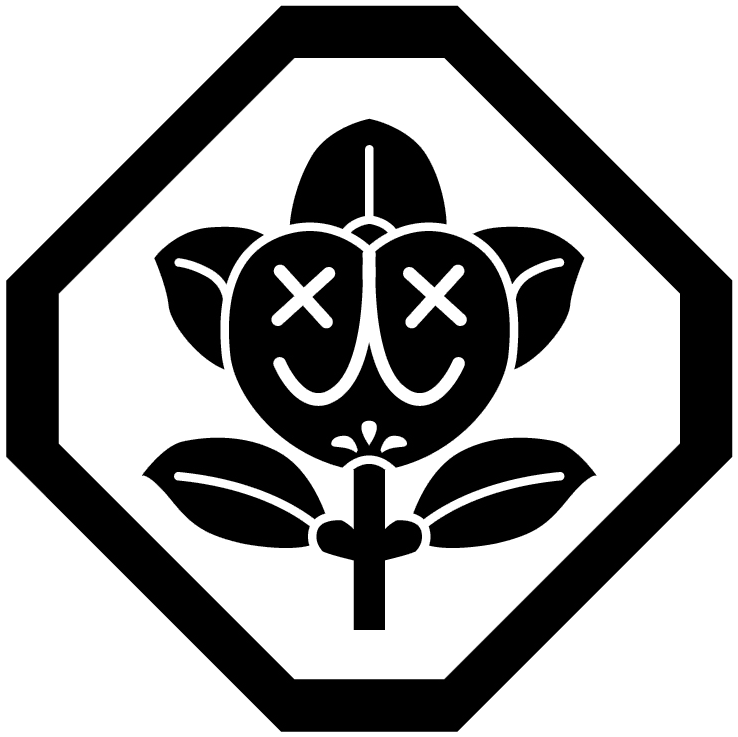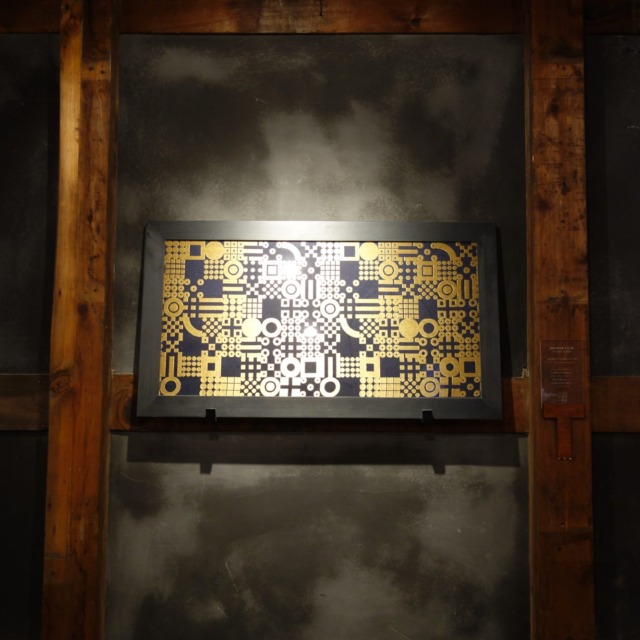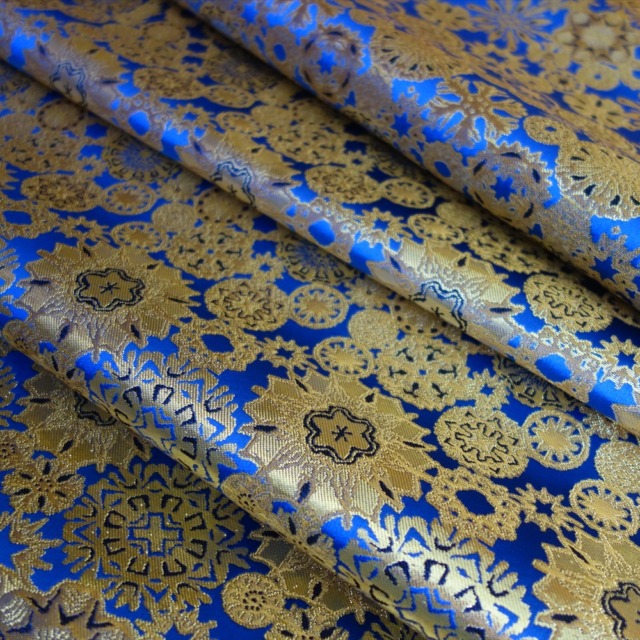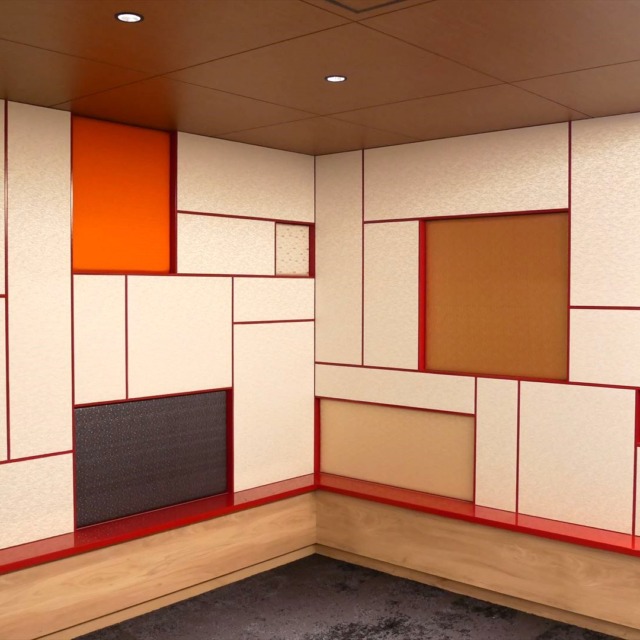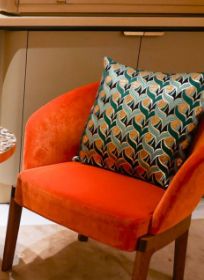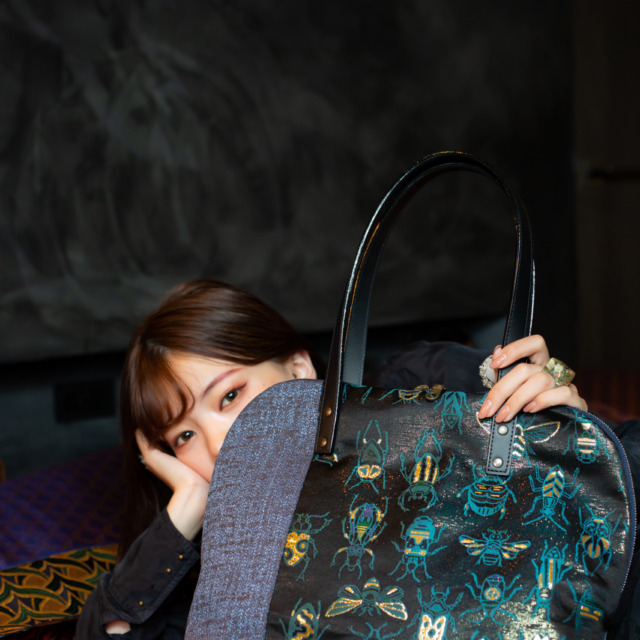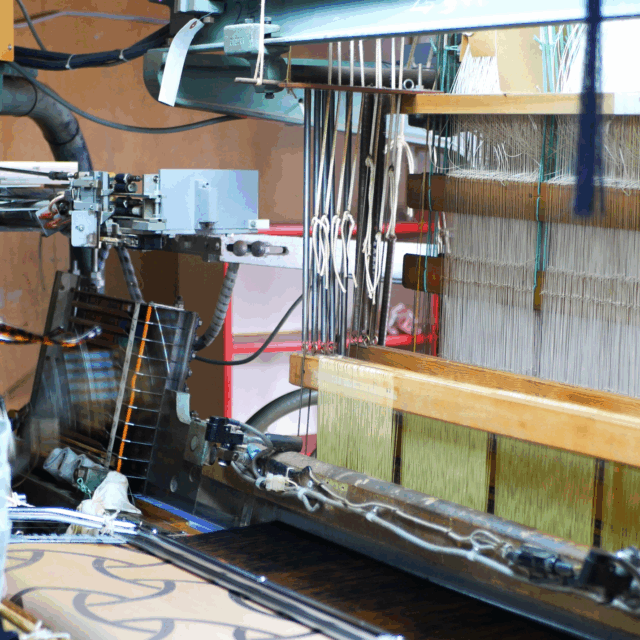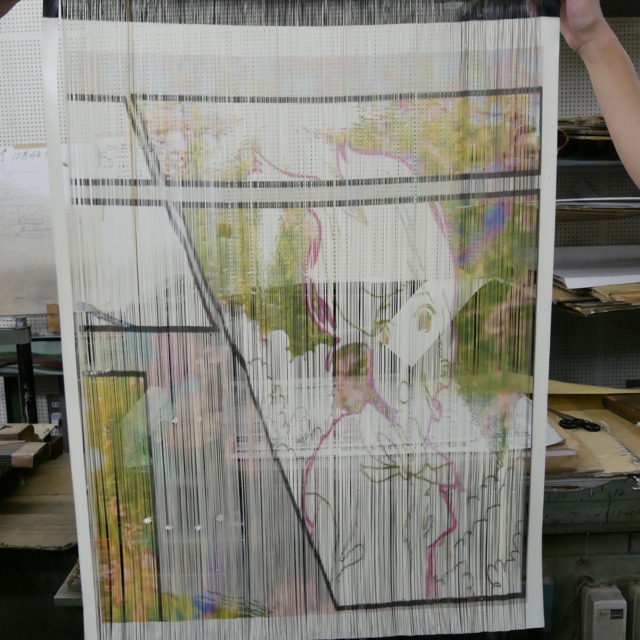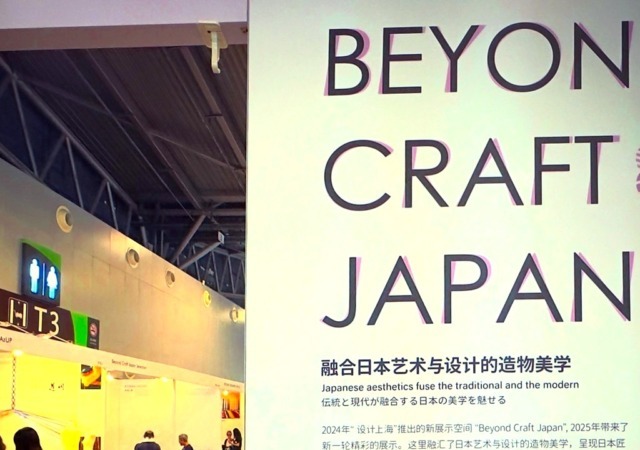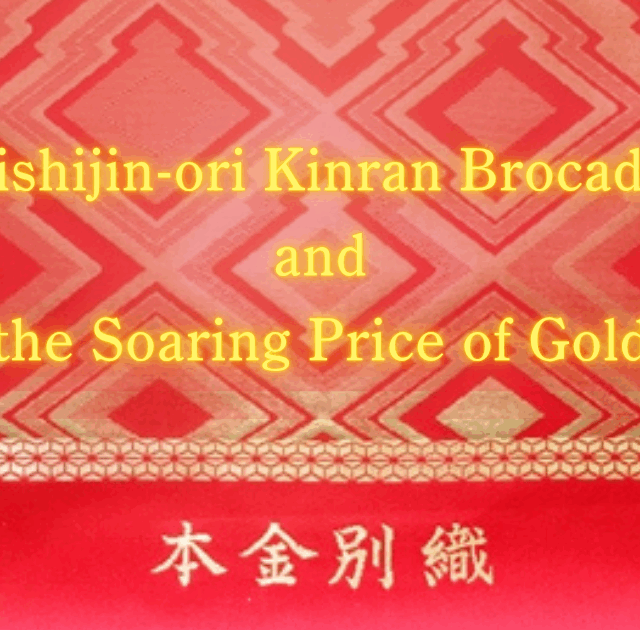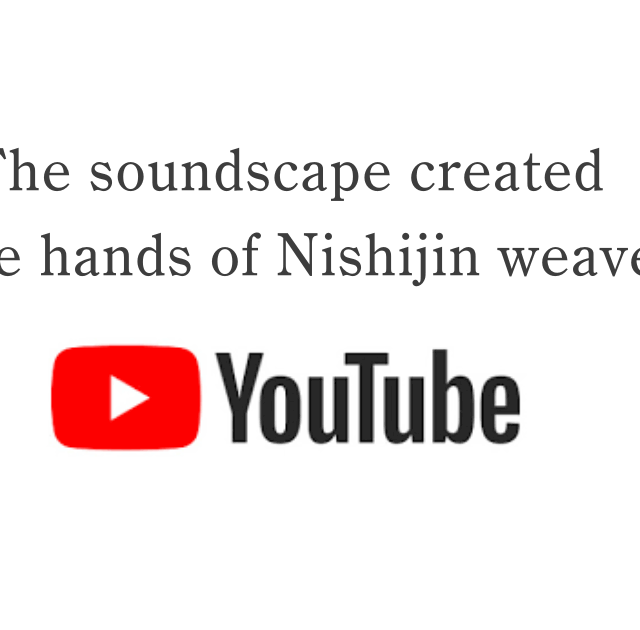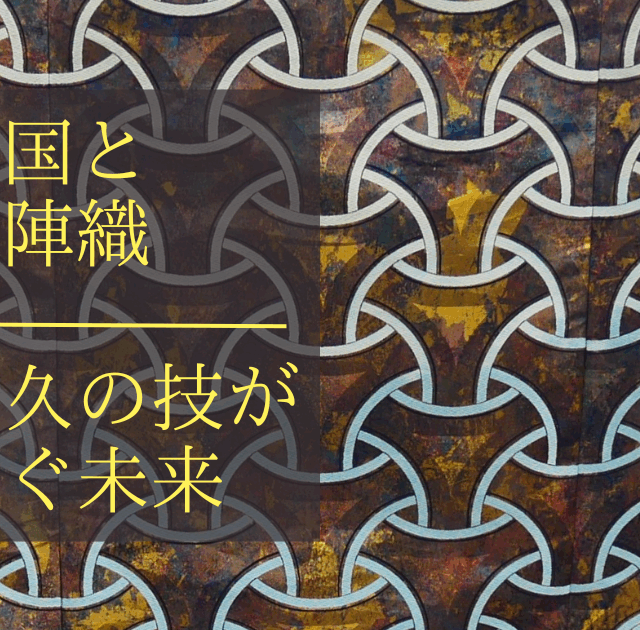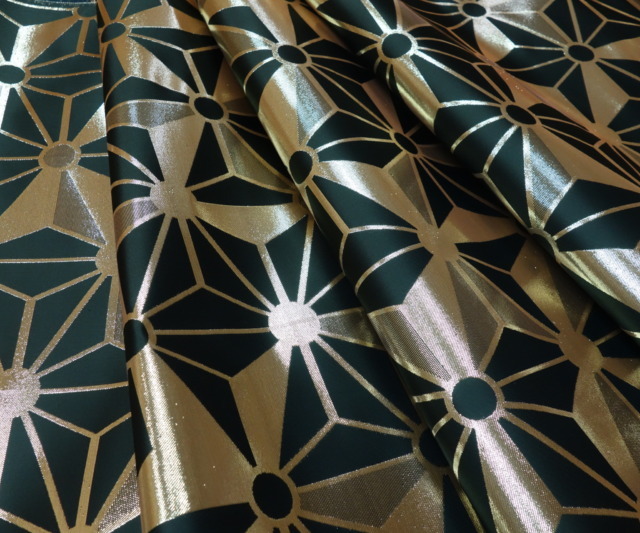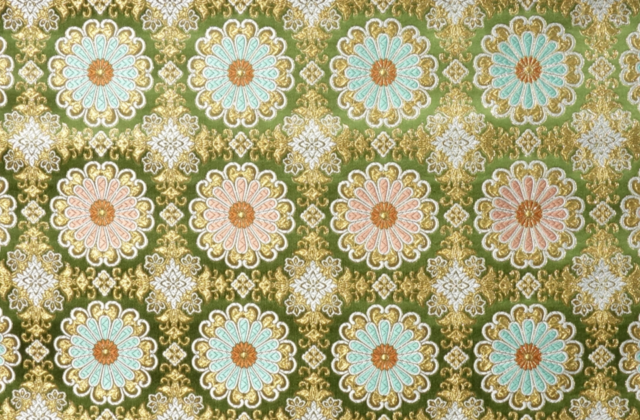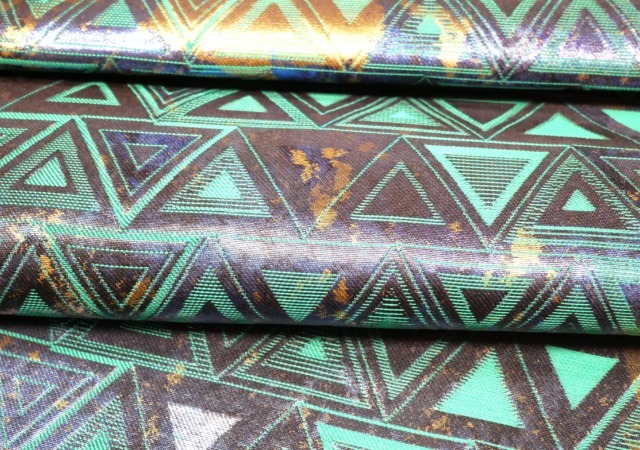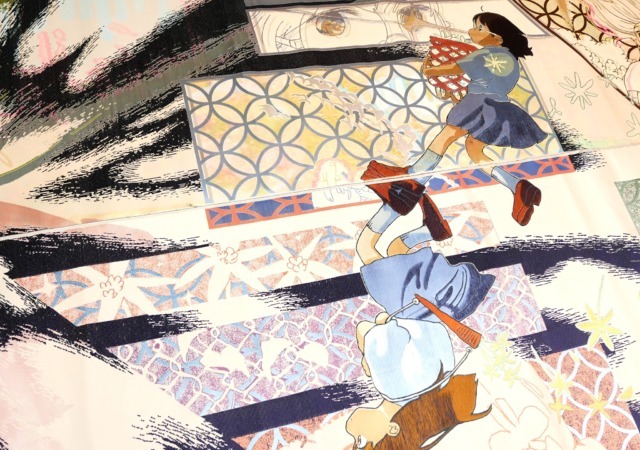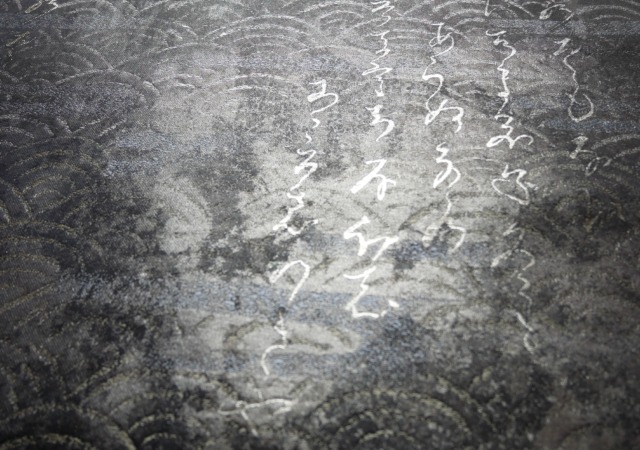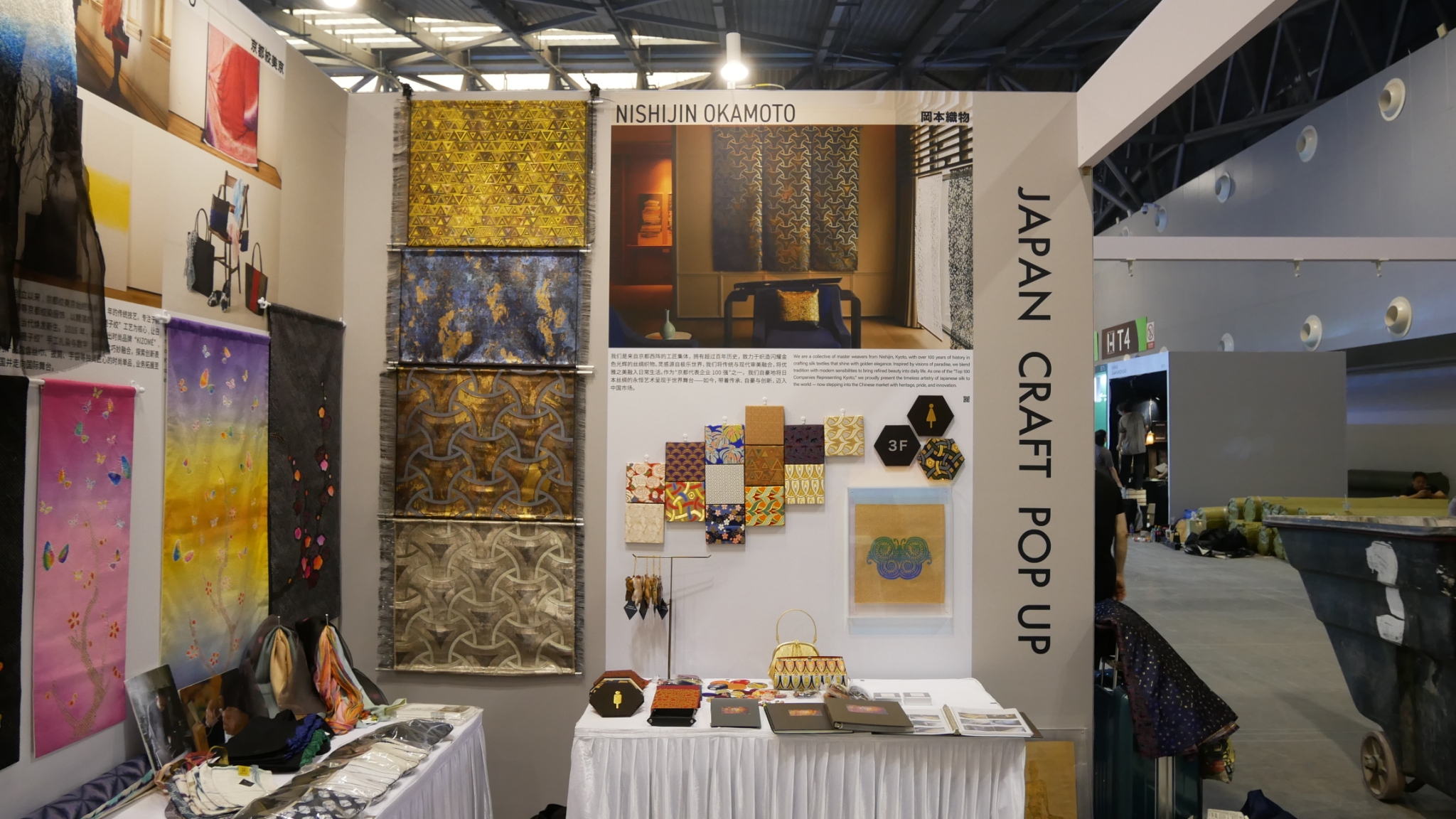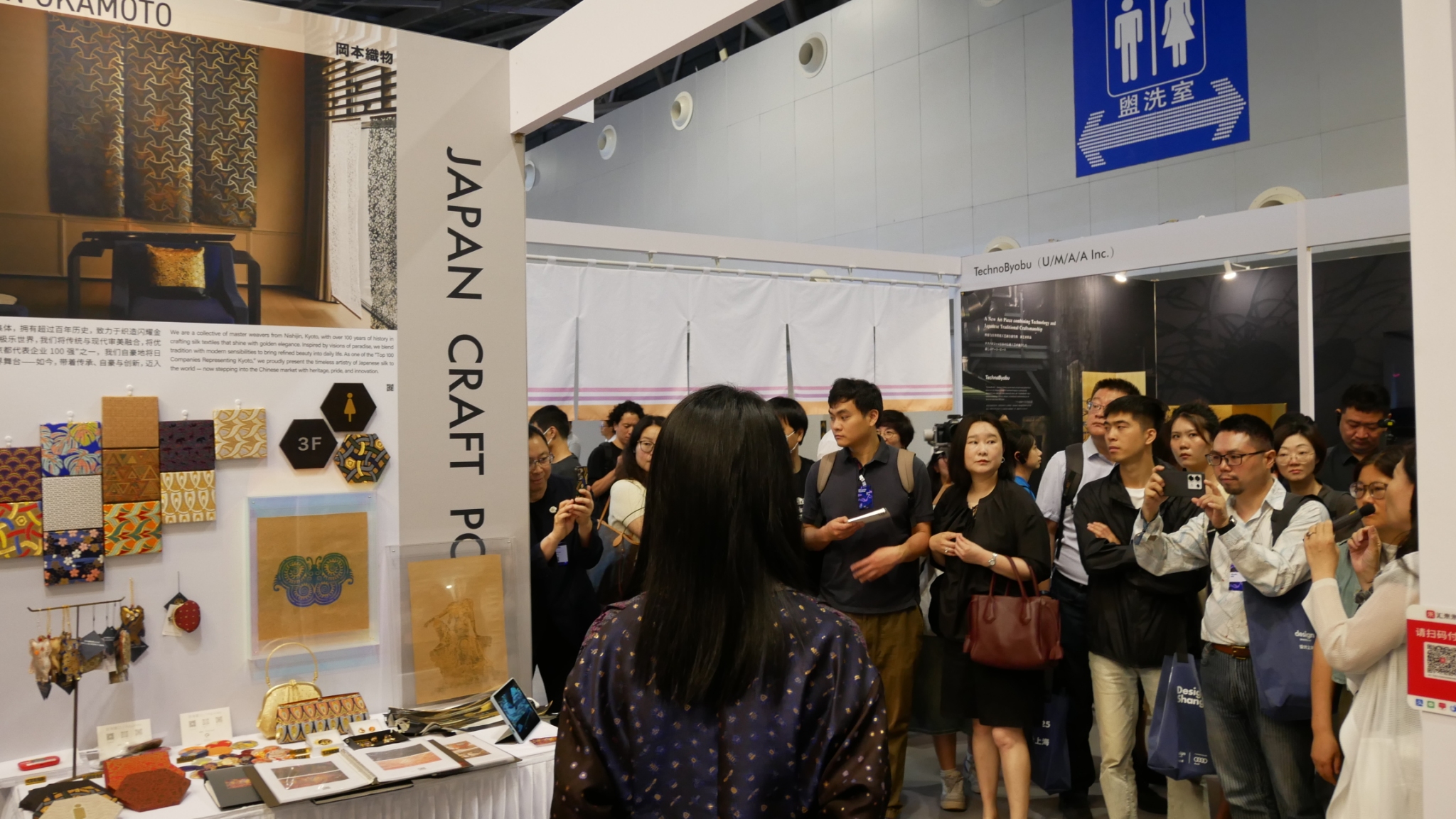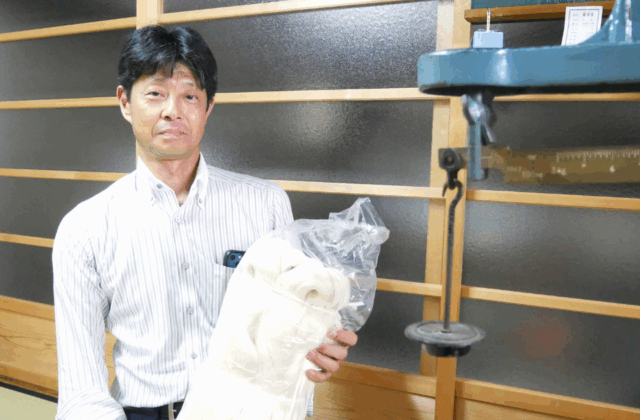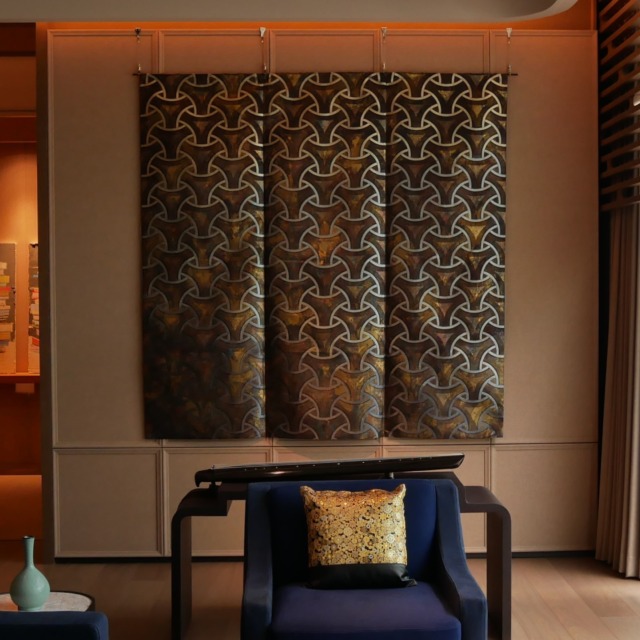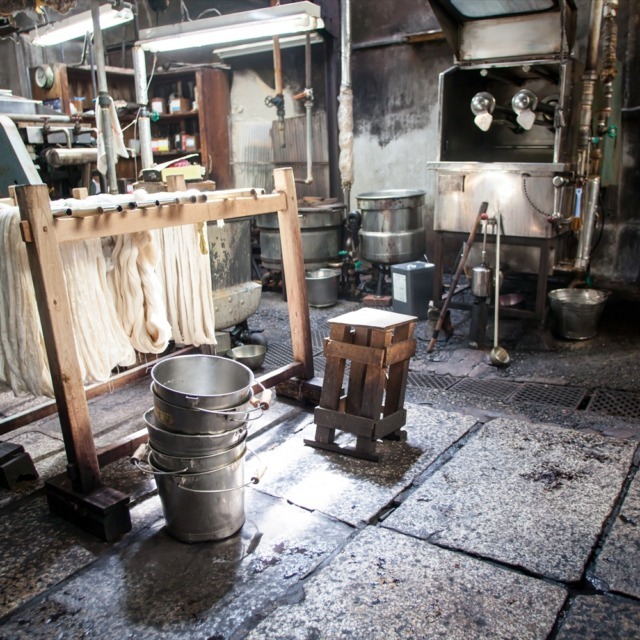Exhibition at Design Shanghai: Nishijin-ori Kinran Brocade and Beyond Craft Japan
In June 2025, Okamoto Orimono had the opportunity to introduce Nishijin-ori Kinran Brocade, a traditional craft, at Design Shanghai, one of Asia’s largest design events, as a member of Beyond Craft Japan. Design Shanghai was held at the Shanghai World Expo Exhibition and Convention Centre, and the Beyond Craft Japan venue showcased a collection of Japan’s leading crafts and manufacturing, including Kyoto-style picture framing and gold leaf printing.
From Kyoto to Shanghai|Introducing the traditional technique of ‘Junbiki-moyou-hikihaku’ passed down in Nishijin
The unique Nishijin weaving technique known as ‘hikibaku’ captivated many visitors. This rare technique involves transferring patterns onto Japanese paper, cutting them into thin strips, and weaving them in a specific order to reproduce the patterns of kasuri weaving and create a deep texture. Visitors were amazed by this unique technique and its depth, and asked many questions.
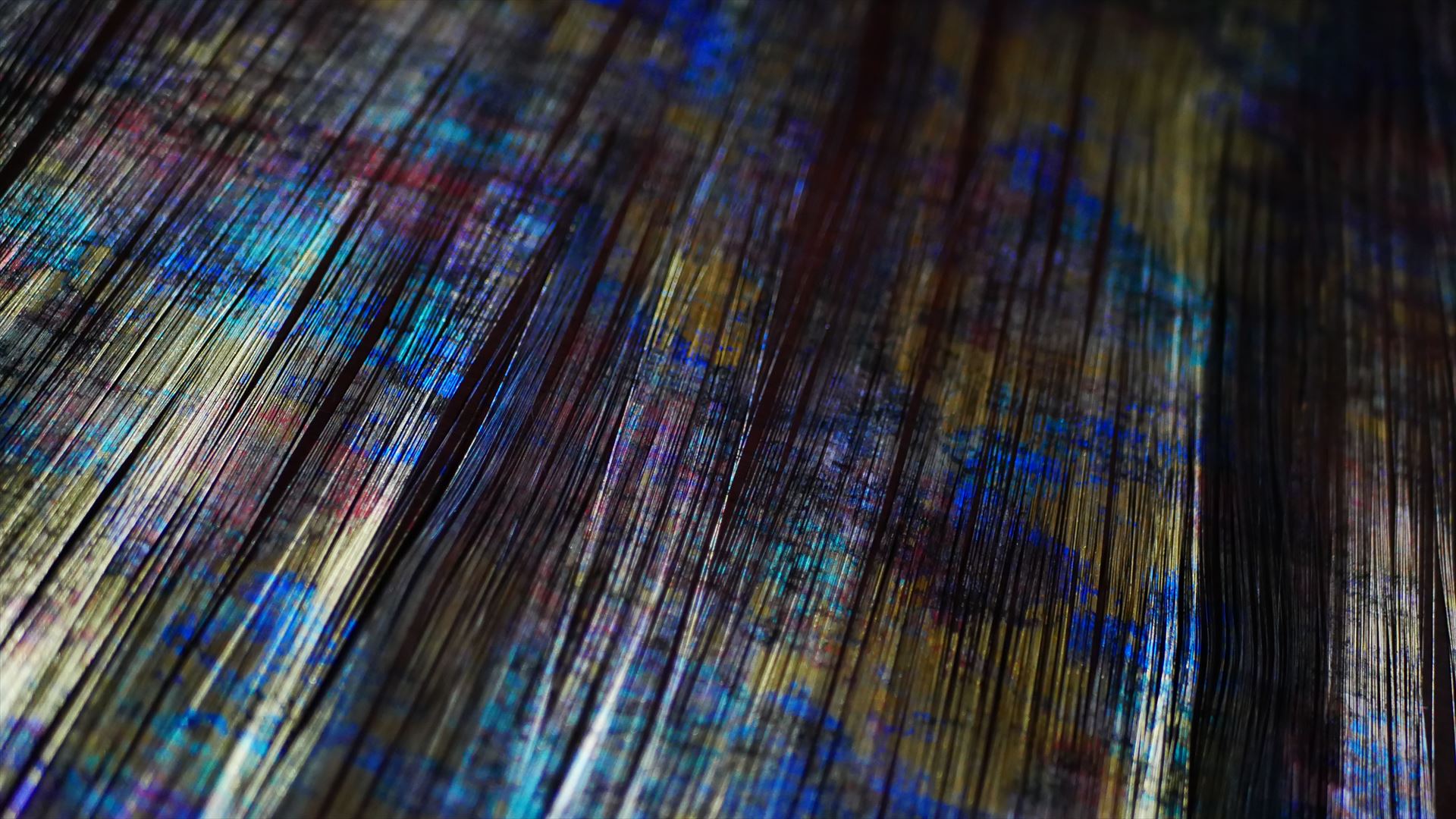
The photo above shows ‘hikihaku thread.’ This is made by applying lacquer or metal foil to Japanese paper to create patterns, then cutting it into thin strips to be used as thread. It is cut into thin strips, but if you look closely, you can see that it has a pattern. This pattern can be reproduced in woven fabric. You can see how it is made in the video below.
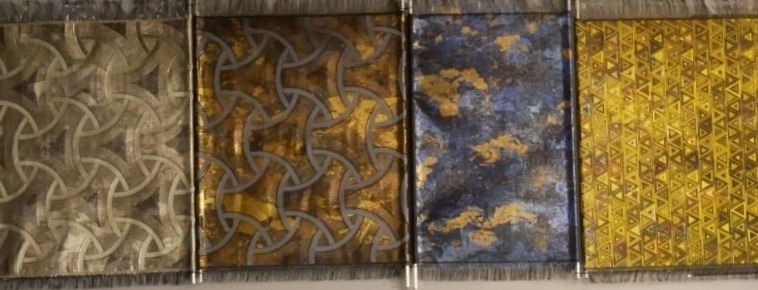
You can watch a video showing how to make ‘Nishijin kinran brocade with a pearl-powder and silver-foil pattern, Spinning-top-Connect pattern tapestry’ by clicking the button below.
Exchange and communication in Shanghai
At the exhibition, Chinese social media culture played a significant role, with many visitors sharing photos and videos of Nishijin textiles via WeChat and Xiaohongshu (RED). We also frequently exchanged WeChat accounts.
This video introduces the ‘Pictogram Panel’ created in collaboration with Kouseido, a traditional Japanese mounting maker. Initially, we filmed it with artisan specializing in mounting Mr. Tanaka for posting on Xiaohongshu (RED), and later posted it on Instagram.
この投稿をInstagramで見る
The interaction with these customers, where the real and digital worlds merged, was quite different from domestic exhibitions in Japan. In China, even shopping payments require mobile phone barcode payments such as WeChat or Alipay, demonstrating how closely integrated daily life and the internet are.

Visit to Amanyangyun and discovery of new possibilities
On the third day of the exhibition, we left the exhibition hall in the afternoon and visited Aman Yun, a luxury hotel in Shanghai created through the ‘Cultural Heritage Revitalisation Project’ led by Mr. Ma Dadong.This space, featuring traditional houses relocated from Jiangxi Province, China, and a forest with a 2,000-year-old camphor tree at its centre, where villas are scattered, suggested the potential for reimagining Nishijin textiles as art and interior design.
This is a documentary about the construction of Aman Yan Yun.
An old house relocated from Jiangxi Province, China, is being rebuilt with modern facilities.

The vast grounds are accessible by cart. Scattered throughout the woods are villas priced at 4 billion yen each (first phase, all sold out).
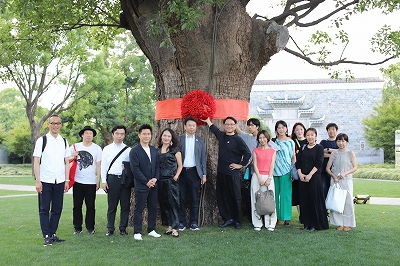
Last day of exhibition | Rediscover the charm of Nishijin-ori Kinran Brocade
On the final day, many visitors came to Design Shanghai, and there was particular interest in ‘hikibaku.’ As a technique that originated in China but is only practised in Japan, it attracted attention from the perspective of Chinese cultural heritage. Through this dialogue, we reaffirmed the power of traditional crafts to inspire empathy across national borders.

The photo above is a Nishijin-ori weaving based on an original painting by Chinese Miao artist Jiang Honglin. We discussed future collaboration when he visited our company.
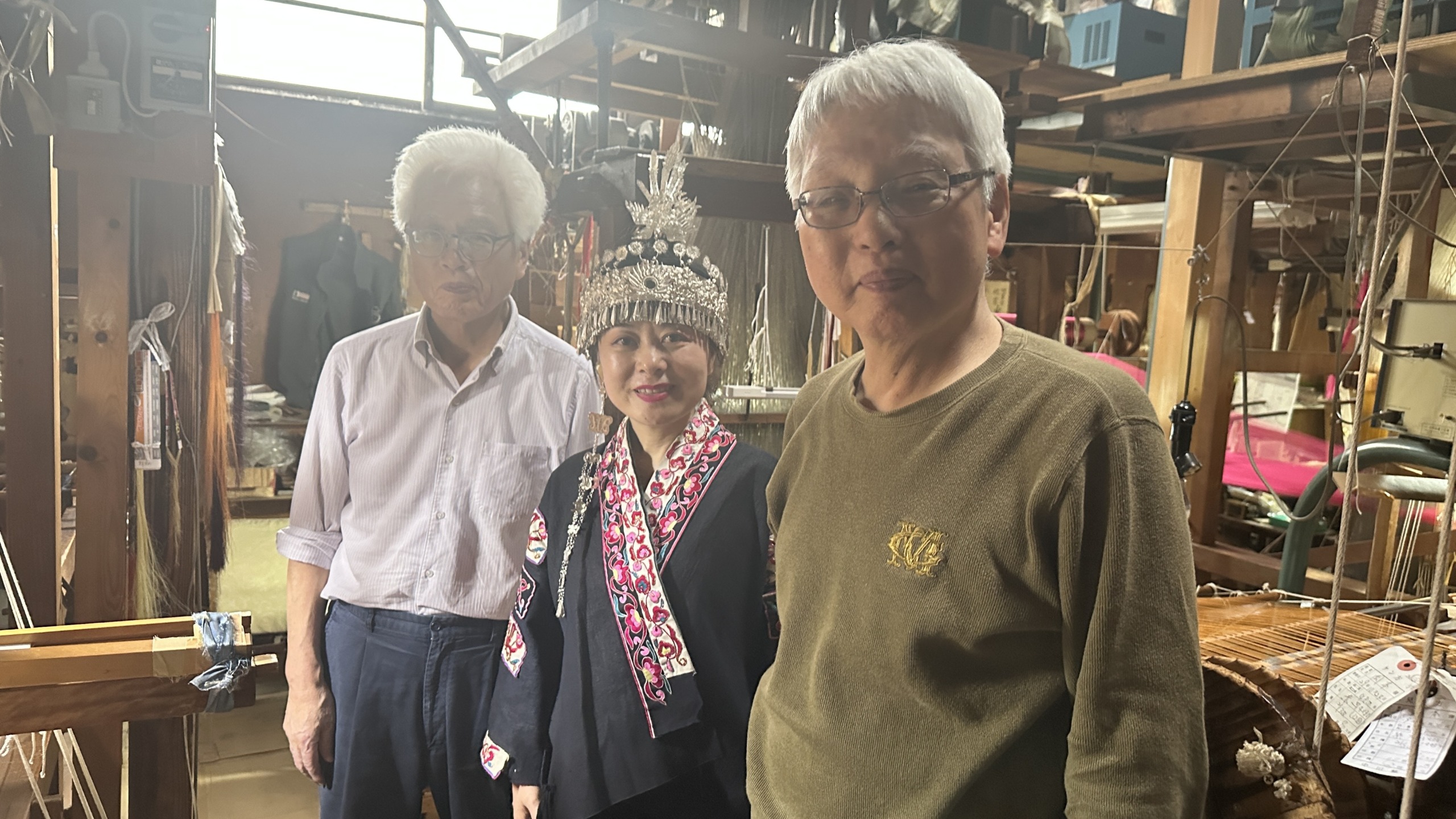
This time, we were honoured to welcome Ambassador Katsu Okada, Consul General of Japan in Shanghai, as a special guest to our booth.
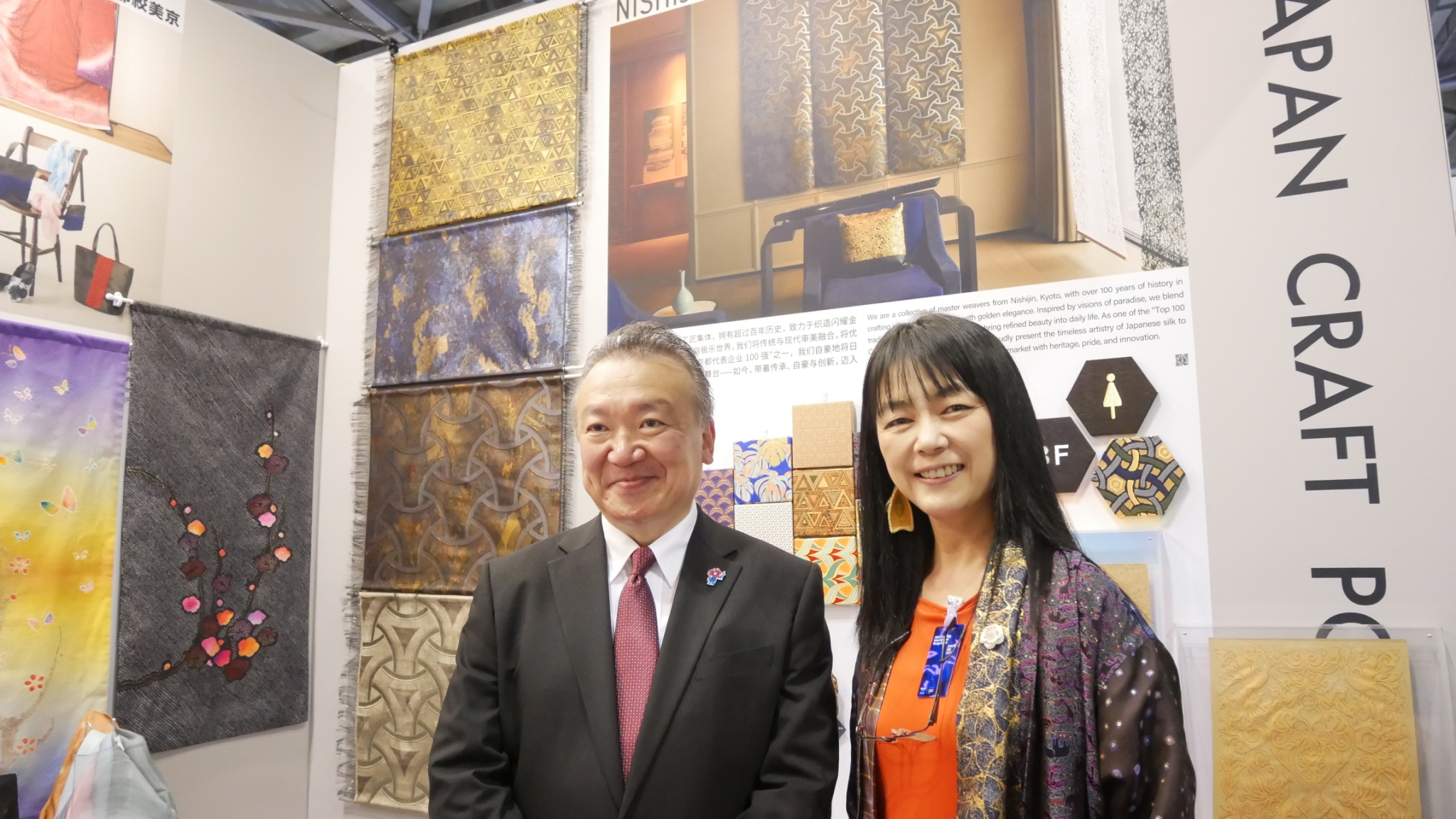
After Design Shanghai, visit to Kanazawa Kogei
The exhibition featuring Nishijin-ori brocade, which we held with renewed enthusiasm this year in hopes of sharing it with even more people than last year, came to a close in the blink of an eye. Looking back, there were many areas for reflection, and we must strive to apply these lessons moving forward. It was a valuable learning experience.
The next day, at the invitation of Zhou Xin, the director of Beyond Craft Japan, I visited the Jin Ze Arts Centre 金澤工藝社, located in a water town between Shanghai and Kanazawa. This place is where the future of traditional crafts is discussed. In workshops utilising old houses from the Muromachi period and former textile factories, traditional techniques such as embroidery and tsuzure-ori are being passed down, and over 800 young artisans have learned these techniques to date.
This is a scene of weaving tapestry. In Japan, there is an ultra-high-end textile called ‘tsumekaki hon-tsuzure,’ which, as the name suggests, is woven using a technique where the ‘claws’ are sharpened into a sawtooth shape and used as a reed to
scrape the threads while weaving. In China, instead of using claws, they made a fine comb from bamboo to weave.
The courtyard of Kanazawa Kogei’s old house. It was raining and the view was beautiful.
The courtyard of an old house relocated to Kanazawa Kogei
Traditional Crafts and the Future|Hope Connected by Handicrafts
Following on from last year, this year’s Design Shanghai provided us with another valuable opportunity to share the potential of Nishijin-ori Kinran with the world. The beauty and storytelling power of traditional techniques resonated with people across borders. We will continue our efforts to spread the appeal of Nishijin-ori Kinran even further.
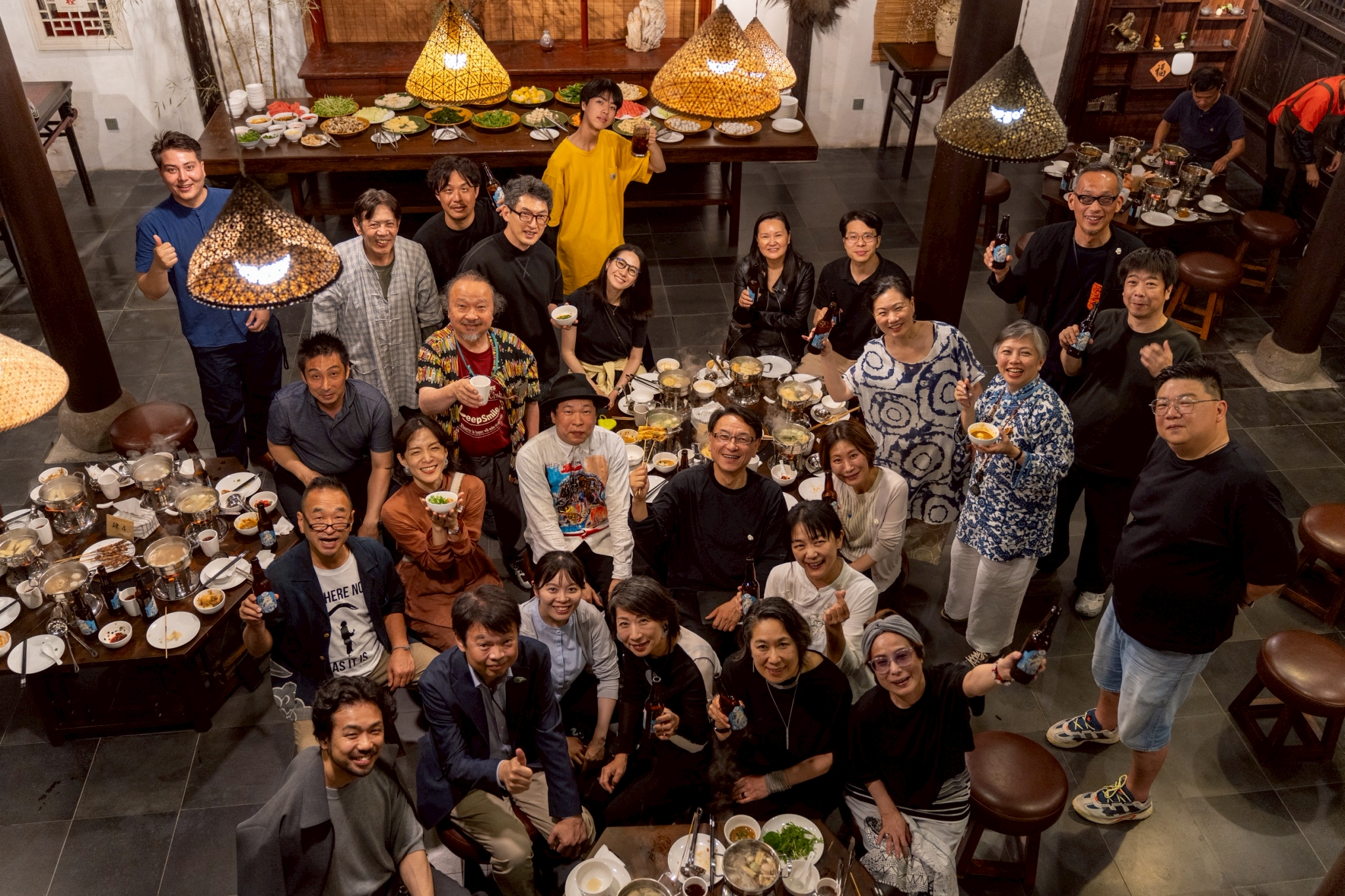
Thank you, Shanghai.
